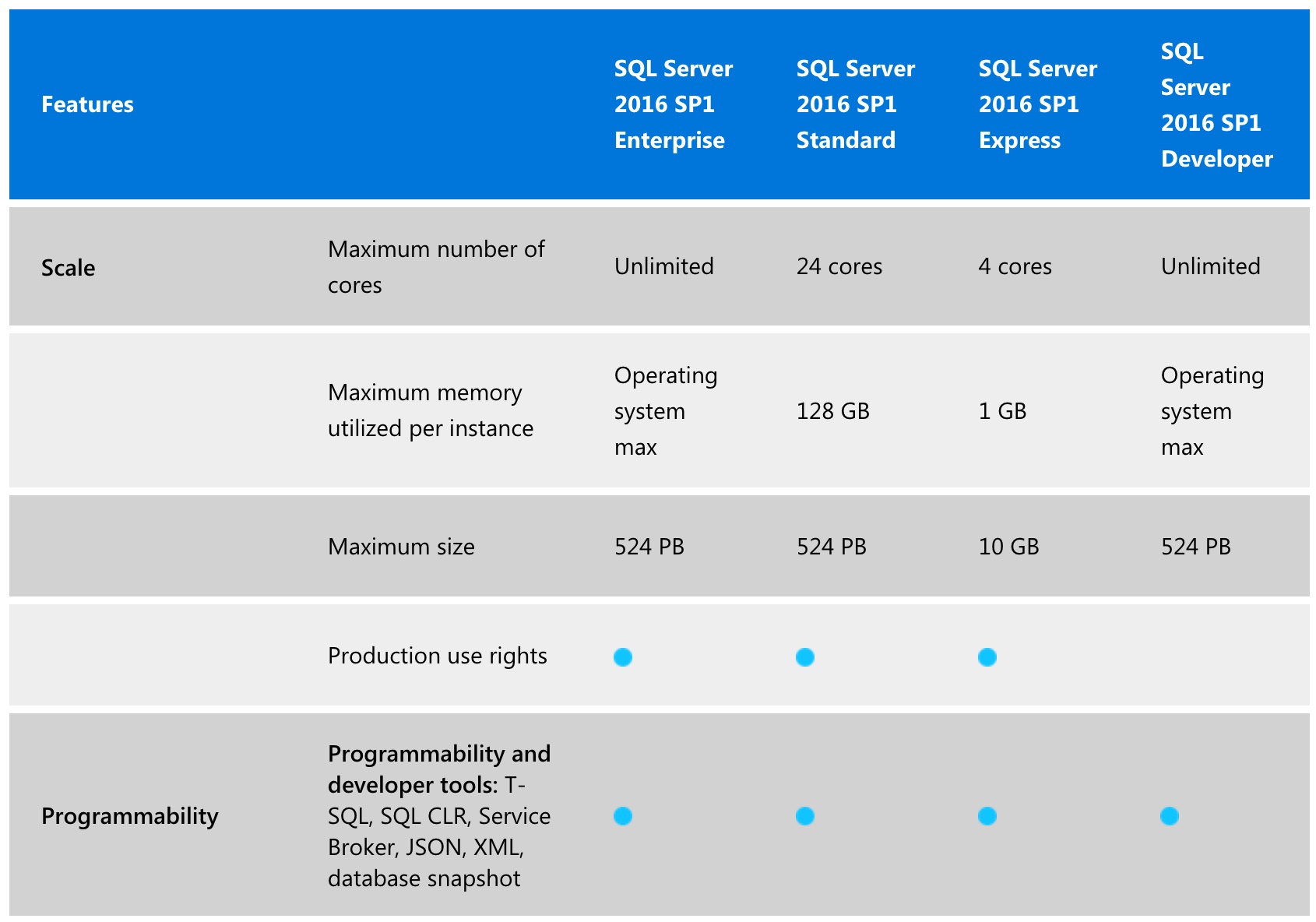


- DIFFERENCE BETWEEN SQL 2012 EXPRESS AND 2016 EXPRESS SOFTWARE
- DIFFERENCE BETWEEN SQL 2012 EXPRESS AND 2016 EXPRESS LICENSE
- DIFFERENCE BETWEEN SQL 2012 EXPRESS AND 2016 EXPRESS FREE
DIFFERENCE BETWEEN SQL 2012 EXPRESS AND 2016 EXPRESS LICENSE
So, if you have a 4 socket server with 8 cores per socket, you would need to license all 32 cores, but Standard edition would only be able to use 24 of the cores. This is true even if they exceed the maximum number of cores allowed for the SQL server edition. However, it is possible to use Virtual NUMA in Hyper-V or vNUMA in VMware to provide a virtual socket/core architecture to the VM, allowing you to license more logical CPUs for SQL.įor physical servers, as mentioned previously, all the cores must be licensed. On a VM, a logical CPU counts as a socket – so, for a Standard edition license, you would be limited to 4 logical CPUs. The Standard, Web and Express editions of SQL Server are limited to a set number of sockets or cores, whichever is smaller. If the virtualization server CPUs are not hyperthreaded, then you’re licensing based on physical CPUs. If the logical CPUs are from virtualization servers that are hyperthreaded, then you are licensing based on hyperthreaded CPUs. Licensing is based only on the number of physical cores on the server.įor virtualized SQL servers, licensing is based on the logical CPUs assigned to the VM running SQL Server. Physical servers do not count hyperthreading when licensing SQL server. Does hyperthreading count for licensing?.For example, if you purchase a 4 core Enterprise Edition license for your Master Instance, you are entitled to 8 times the 4 cores, or 32 cores for your Big Data nodes.
DIFFERENCE BETWEEN SQL 2012 EXPRESS AND 2016 EXPRESS SOFTWARE
Keep in mind with Software Assurance Microsoft includes a limited number of Big Data node core licenses. If you are operating a SQL Server 2019 Big Data Clusters, you will need to purchase a SQL Server Per Core license for your Master Instance, you’ll also need to purchase Software Assurance or a subscription as well. For containers, each v-core (or virtual processor, virtual CPU, virtual thread) allocated to the container must be licensed, with a minimum of 4 license units. On a VM, you only need to license the logical CPUs allocated to the VM, with a minimum of 4 license units. On a physical server running SQL Server, all the cores on the server must be licensed for SQL, even if that is more CPU capacity than your SQL instance requires. The Express edition does not have the usage limits that Developer edition does, but it does have limits on scale and functionality. Developer edition has the same capabilities as Enterprise, but the licensing agreement limits the ways in which you can use Developer edition.
DIFFERENCE BETWEEN SQL 2012 EXPRESS AND 2016 EXPRESS FREE
Also, keep in mind that there are limitations to the free Developer and Express editions. Pricing is available online, but, as always, contact your re-seller for specific pricing. If licensed by core, licenses are sold in packs of 2, with a minimum of 4 core licenses per socket, and the maximum number of CPU cores is based on the SQL Server edition, with the following limits for single instances of the Database Engine, Analysis Services (AR), or Reporting Services (RS) components : Edition Microsoft SQL Server licensing is based on both SQL edition and licensing options (per core or Server + CAL). Monitoring performance indicators to determine if SQL Server has enough resources for optimal performance.ĭownload Achieving Peak SQL Performance – Learn how an improved monitoring strategy can help optimize database performance and reduce the amount of dedicated resources needed for database monitoring and management.Evaluating which scenario is a best fit in terms of usage, configuration and licensing costs.Inspecting licensing agreements and NUMA configurations to determine if there are any limitations on available CPUs.


 0 kommentar(er)
0 kommentar(er)
